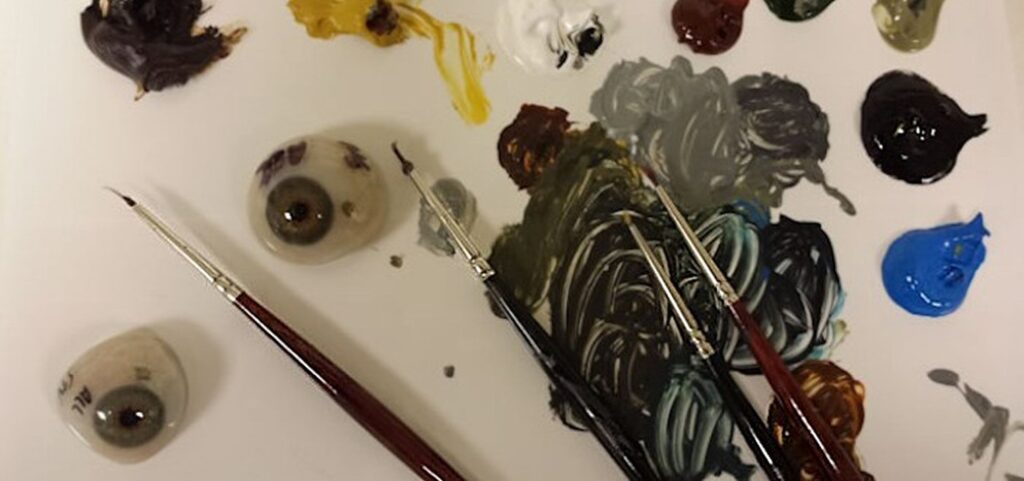Aesthetically, an artificial eye requires (broadly speaking) two key ingredients: colour accuracy and a large degree of permanence.
Many people ask nowadays “Do you take a digital photo of my other eye?” This answer to this is yes, usually to note the detail on the iris, but not for actual colour and not to print and mount in an artificial eye as one may imagine.
There are a lot of intermediate steps in-between taking a photo and incorporating that photo into a prosthetic eye. It has been tried, and largely abandoned at this moment in time chiefly down to the problem of colour accuracy and consistency.
Have you ever stood in a high street electrical shop and looked at all the televisions showing the same channel? Have you noticed the varying colour shifts in all these TVs? One may be slightly bluer than the other; another may have a greener tinge; yet another more red. One TV image may seem more vivid than its neighbour – yet another may display a darker image with a higher contrast.
The exact same problem lies with digital displays used in computer technology. What you see on your digital camera screen may be different to what you see on your computer monitor. Add into the mix printing of the image and you can see where we are going…
Have you ever printed out photos from your PC? How often does the colour of the print not match what you see on the screen? Painting an artificial eye by hand is the ultimate example of WYSIWYG technology in action (What You See Is What You Get).
On the other point of permanence, we all know that ink fades, but at what rate? Artist paints have a demonstrated track record of longevity proven over 70 years of artificial eye manufacture.
That’s why most Ocularists still hand-paint artificial eyes because they have ultimate control over the final colour and have safe knowledge that the finished product will have a healthy lifespan.















